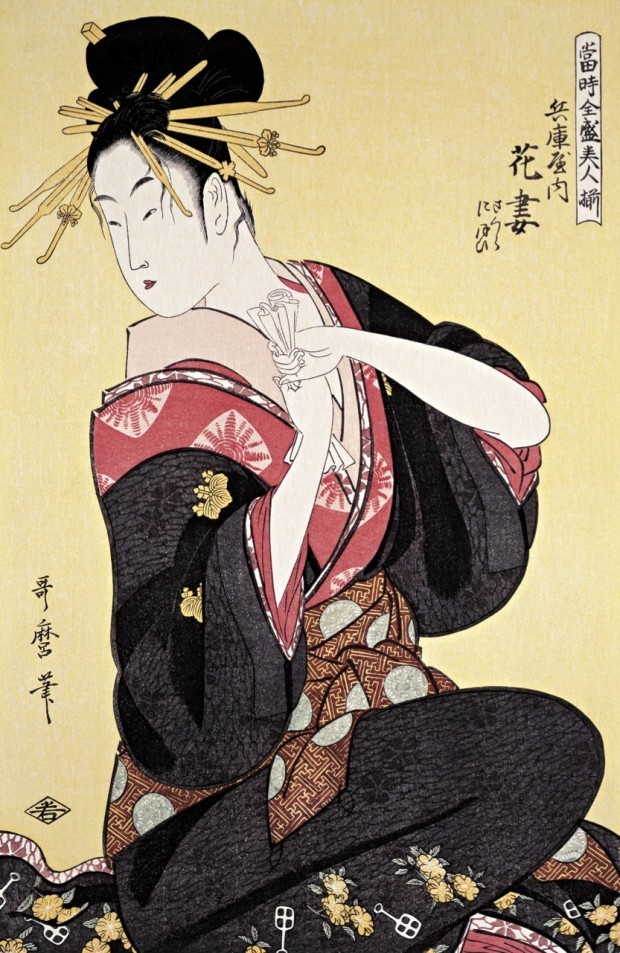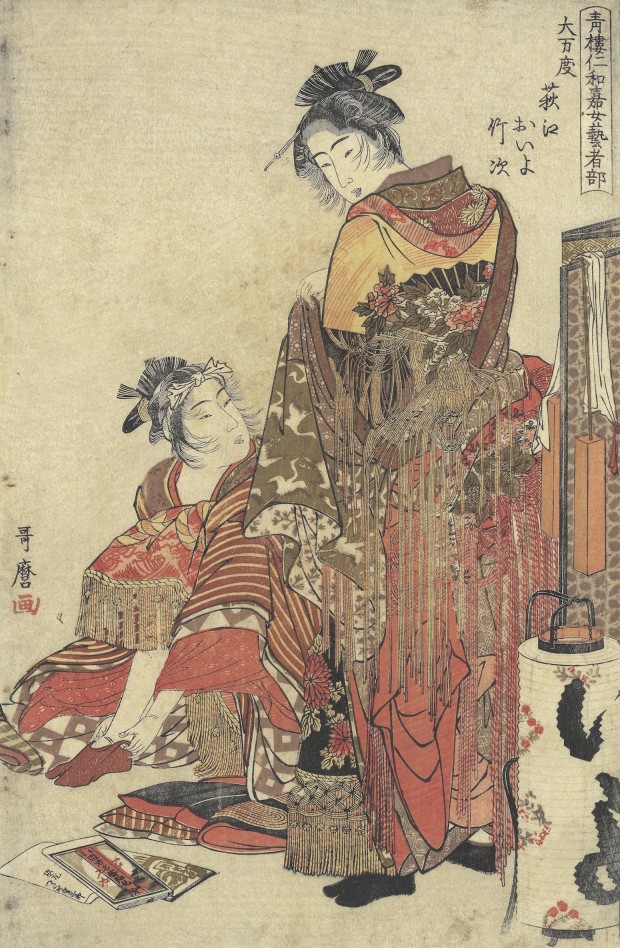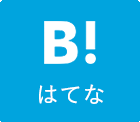Just who was Utamaro?
When was he born, and where? Since we don’t even have this type of basic records on the famed Japanese artist 喜多川歌麿 (Kitagawa Utamaro, c.1753-1806) we’ll just follow the theory that he was born in 1753 and proceed to introduce his role as a painter in the world of Japanese art to which he dedicated half of his life.
We also have no definitive information about his birthplace, whether it was 江戸 (Edo 1603-1868, present day Tokyo), Kawagoe, or Kyoto. What we do know is that someone finally took note of his existence by recording that around the age of eighteen years old, Utamaro had become a pupil of the “town painter” (i.e., not officially recognized) Toriyama Sekien, who studied the 狩野派(Kano school) style of painting.
 Kitagawa Utamaro, “Hanazuma of the Hyōgoya” from the series Array of Supreme Portraits of the Present Day, ōban size multicolored woodblock print, 1794. Image: Fukuma Hidenori (Aflo)
Kitagawa Utamaro, “Hanazuma of the Hyōgoya” from the series Array of Supreme Portraits of the Present Day, ōban size multicolored woodblock print, 1794. Image: Fukuma Hidenori (Aflo)
A pupil of the “town painter”
Utamaro learned to draw from Toriyama and debuted as an 浮世絵 (ukiyo-e) artist under the name 北川豊章 (Kitagawa Toyoaki). If you’re not already aware, ukiyo-e were “pictures of the floating world” that depicted everyday life in the seventeenth through nineteenth century-Edo. Kitagawa is thought by some to be his real surname. Others, however, opine that this name owes to Utamaro’s combination of two famous styles of ukiyo-e, the Kitao school and the Katsukawa school. Eventually he took the name Utamaro, though he went through several permutations of how to write its pronunciation before hitting on the final historical version.
 Kitagawa Utamaro, “Oomando Ogie Oiyo Takeji,” part of a series on Seirou-niwaka geisha, large nishiki-e brocade picture, 1783, Yamaguchi Prefectural Hagi Uragami Museum.
Kitagawa Utamaro, “Oomando Ogie Oiyo Takeji,” part of a series on Seirou-niwaka geisha, large nishiki-e brocade picture, 1783, Yamaguchi Prefectural Hagi Uragami Museum.
Seeking new techniques to identify his artistic strengths
During his twenties, Utamaro tried to “find himself” by adopting a variety of different styles and media. The result of this period of searching, and his decision to write his surname Kitagawa as 喜多川, brought him to his life’s first major turning point. It came when Utamaro drew illustrations to accompany 狂歌 (kyoka, comic poems in the traditional tanka style). These poems had been solicited from the public and eventually, a series of seven of these “kyoka picture books” were published, including Utamaro’s “Picture Book of Selected Insects.”
 Kitagawa Utamaro, “Japanese robin” from the A Myriad of Birds compared with Kyoka Poems series, polychrome woodblock print, book 2, circa 1790, 25.5 × 18.8 cm, Chiba City Museum of Art.
Kitagawa Utamaro, “Japanese robin” from the A Myriad of Birds compared with Kyoka Poems series, polychrome woodblock print, book 2, circa 1790, 25.5 × 18.8 cm, Chiba City Museum of Art.
The detail and realism of Utamaro’s drawings greatly impressed the famed promoter Tsutaya Juzaburo, nicknamed Tsutaju, whose publications played a major role in the popularization of ukiyo-e. Tsutaju became an important figure in Utamaro’s life, by introducing him to kyoka writers and broadening his social contacts, all of which contributed to the greater development of Utamaro’s artistic abilities and helped to bring him a reputation in erotic art as well.












